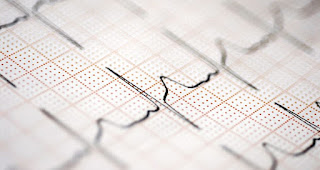Idioventricular Rhythm Meaning, Rate, ECG, Causes, Treatment
Normally heartbeat is triggered by pace maker of heart but when these triggering signals stop receiving by heart from SA node or AV node then myocardium of heart itself works as pacemaker and this is known as idioventricular rhythm. SA node stands for Sino Atrial node and AV node stands for Atrioventricular node. Myocardium is a membrane which covers heart and protects it. Signals from ventricle are transmitted to every cell via cell to cell phenomenon. Cells involved are cardiomyocytes. Conduction system is not used for transforming signals to cells. It creates bizarre QRS complexes i.e. more than 0.12 seconds.
There are many causes behind idioventricular rhythm some of them are as follows:
Other causes are myocarditis, congenital heart disease and last but not least cardiomyopathy.
ECG stands for electrocardiogram. Idioventricular rhythm mostly resembles ventricular tachycardia. But the difference is in ventricular rate which is below 60 beats per second in ventricular tachycardia. Idioventricular rhythm ECG shows atrioventricular dissociation and sometimes termed as slow ventricular tachycardia. When ventricular rate lies between 60 and 100 bpm it is then known as accelerated idioventricular rhythm. Here is an example of ECG of idioventricular rhythm in which there is a left bundle branch block pattern. AV dissociation is visible in this ECG report. Lead V1 rhythm in bottom shows AV node dissociation.

In idioventricular rhythm ventricular rate increases and normally lies between 20 to 40 beats per minute. But in case of accelerated idioventricular rhythm ventricular rate exceeds from 40 beats per minute. Ventricular rhythm rate of 20 to 40 beats per minute is also known as intrinsic automaticity of the ventricular myocardium. Ventricular rate more than 50 beats per minute have consistent ventricular rhythm escape and ventricular rates more than 110 beats per minute have consistent ventricular tachycardia. This is all about idioventricular rhythm rate which differentiate it from other cardiac conditions like tachycardia and other athletic heart diseases.
Idioventricular rhythm is a time based condition i.e. benign and no treatment is required to treat it. It manages by self-limiting capability. It can resolve itself when rate of sinus increases from ventricular foci. Anti-arrhythmic drugs can precipitate hemodynamic deterioration that’s why these drugs should be avoided. Treating underlying cause can also help to resolve idioventricular rhythm if it occurs due to myocardial perfusion then it should be restored. Sometimes idioventricular rhythm is of help in low cardiac output state and atropine is administered to increase sinus rate and AV conduction. Idioventricular rhythm self-resolving capability makes it harmless.
Idioventricular Rhythm Causes
There are many causes behind idioventricular rhythm some of them are as follows:
- After cardiac arrest return of spontaneous circulation (ROSC).
- An athletic heart is another cause of idioventricular rhythm.
- Some drugs can also cause idioventricular rhythm like adrenaline or isoprenaline. These drugs are beta sympathomimetic.
- Sometimes drug toxicity can also cause idioventricular rhythm like cocaine, digoxin and some anesthetics like desflurane.
- The most common cause behind idioventricular rhythm is reperfusion phase of an acute myocardial infarction.
- Some abnormalities in electrolyte balance lead to idioventricular rhythm.
Other causes are myocarditis, congenital heart disease and last but not least cardiomyopathy.
Idioventricular Rhythm ECG
ECG stands for electrocardiogram. Idioventricular rhythm mostly resembles ventricular tachycardia. But the difference is in ventricular rate which is below 60 beats per second in ventricular tachycardia. Idioventricular rhythm ECG shows atrioventricular dissociation and sometimes termed as slow ventricular tachycardia. When ventricular rate lies between 60 and 100 bpm it is then known as accelerated idioventricular rhythm. Here is an example of ECG of idioventricular rhythm in which there is a left bundle branch block pattern. AV dissociation is visible in this ECG report. Lead V1 rhythm in bottom shows AV node dissociation.

Idioventricular Rhythm Rate
In idioventricular rhythm ventricular rate increases and normally lies between 20 to 40 beats per minute. But in case of accelerated idioventricular rhythm ventricular rate exceeds from 40 beats per minute. Ventricular rhythm rate of 20 to 40 beats per minute is also known as intrinsic automaticity of the ventricular myocardium. Ventricular rate more than 50 beats per minute have consistent ventricular rhythm escape and ventricular rates more than 110 beats per minute have consistent ventricular tachycardia. This is all about idioventricular rhythm rate which differentiate it from other cardiac conditions like tachycardia and other athletic heart diseases.
Idioventricular Rhythm Treatment
Idioventricular rhythm is a time based condition i.e. benign and no treatment is required to treat it. It manages by self-limiting capability. It can resolve itself when rate of sinus increases from ventricular foci. Anti-arrhythmic drugs can precipitate hemodynamic deterioration that’s why these drugs should be avoided. Treating underlying cause can also help to resolve idioventricular rhythm if it occurs due to myocardial perfusion then it should be restored. Sometimes idioventricular rhythm is of help in low cardiac output state and atropine is administered to increase sinus rate and AV conduction. Idioventricular rhythm self-resolving capability makes it harmless.
Idioventricular Rhythm Meaning, Rate, ECG, Causes, Treatment
 Reviewed by Simon Albert
on
July 12, 2019
Rating:
Reviewed by Simon Albert
on
July 12, 2019
Rating:
 Reviewed by Simon Albert
on
July 12, 2019
Rating:
Reviewed by Simon Albert
on
July 12, 2019
Rating:











